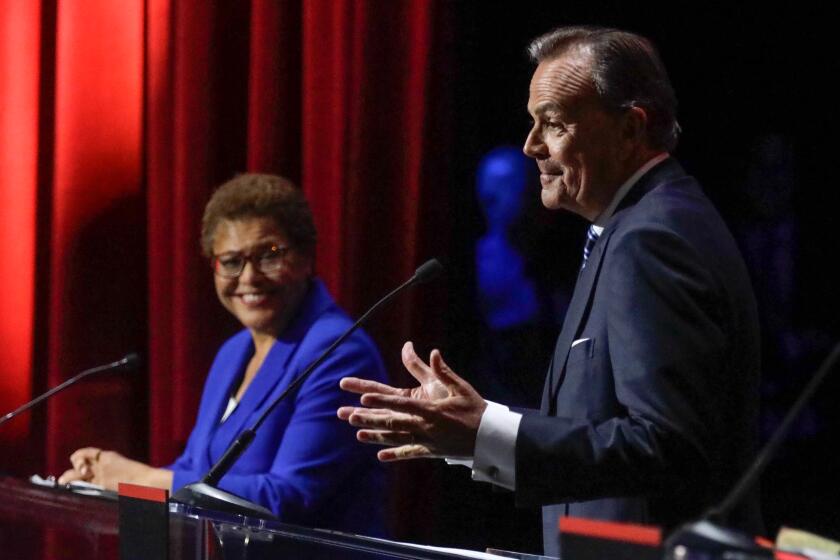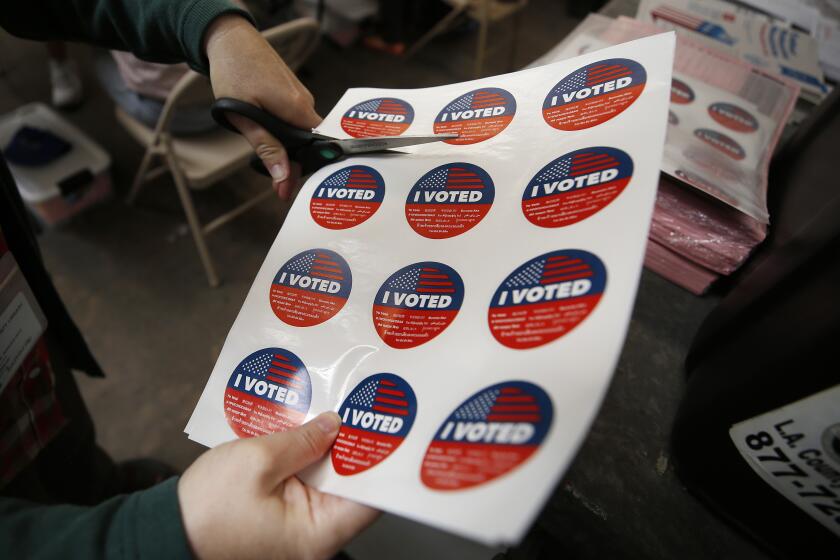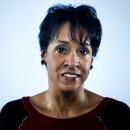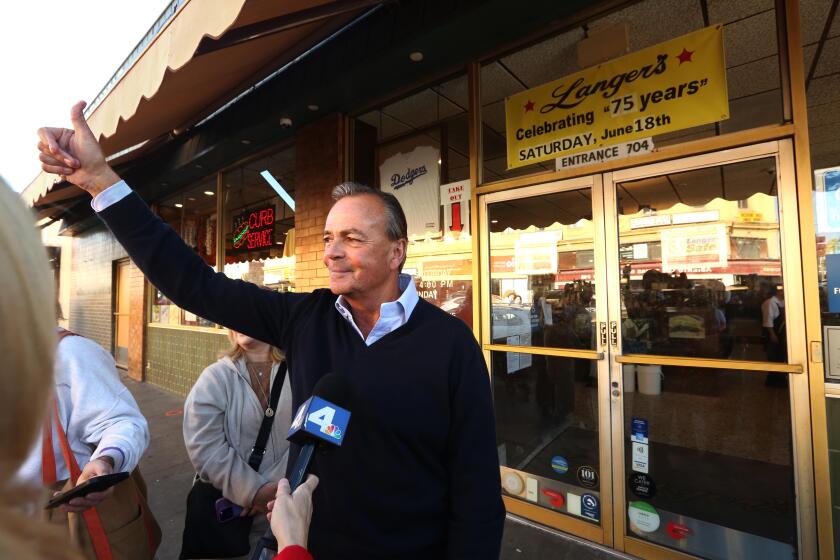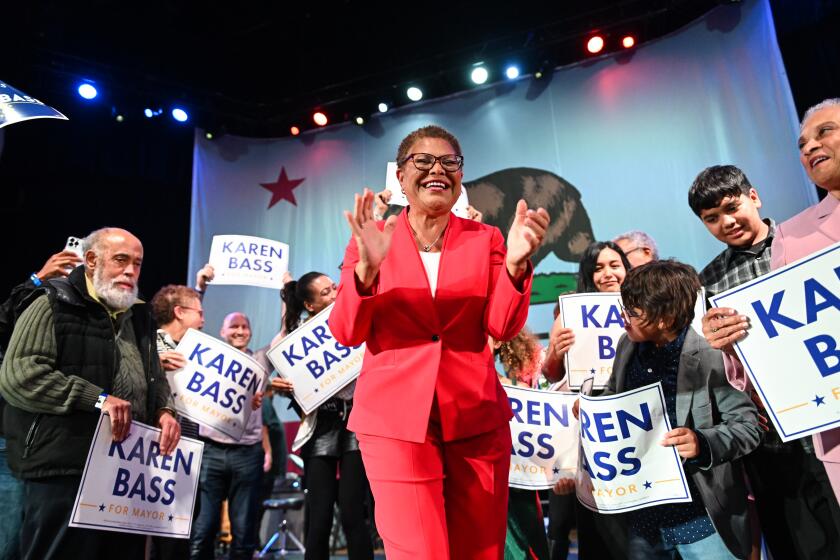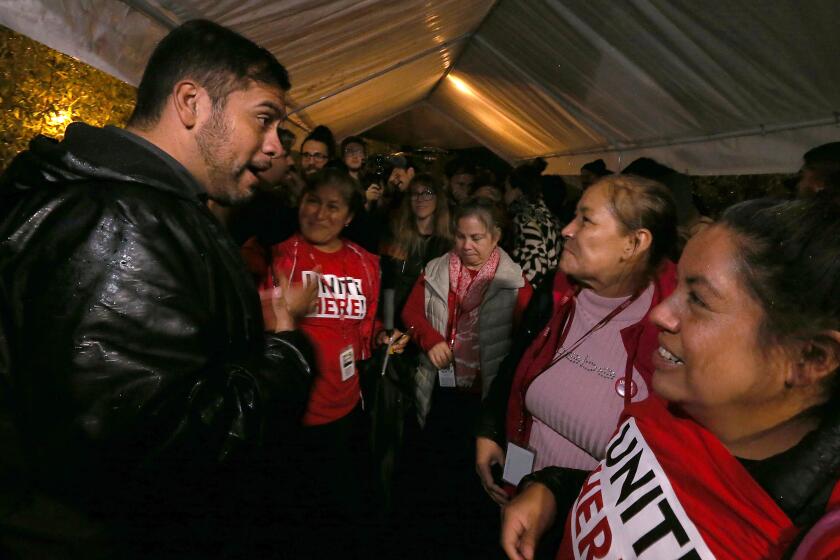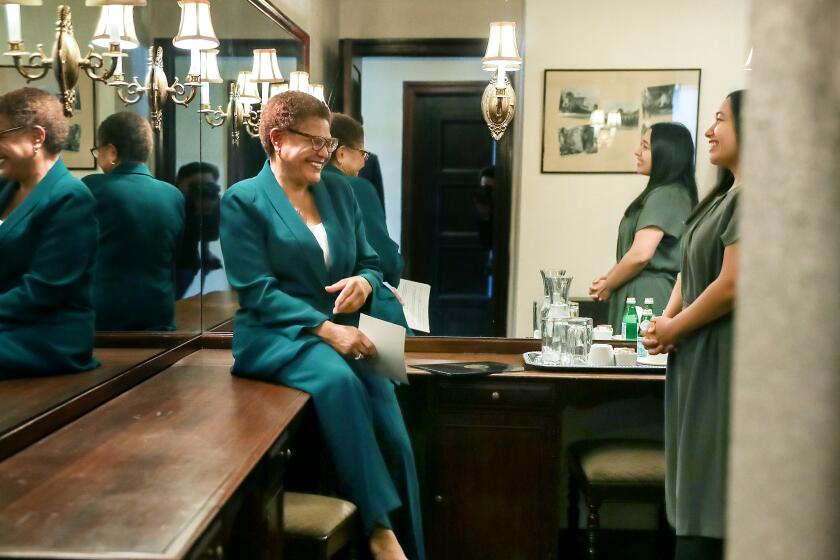Column: The ‘older, whiter Valley’ no longer exists. Where do new suburban voters go for mayor?
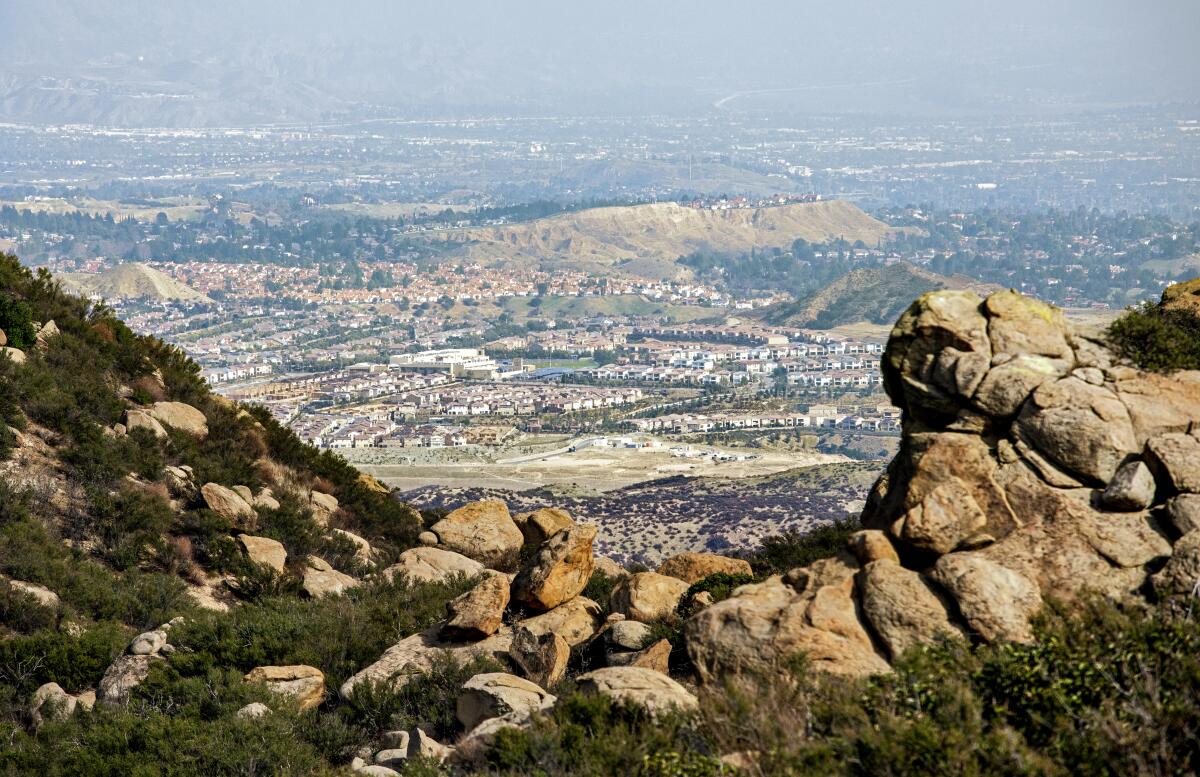
- Share via
As someone who has lived in the San Fernando Valley for more than 40 years, there’s a question I’ve been asked a lot lately by people who live “over the hill”:
“How do you think the Valley is going to vote in Los Angeles’ mayoral race?”
As if the Valley — with more than 1.75 million people and as much diversity as L.A. — is one big predictable monolith.
I understand the tendency. The Valley has always been L.A.’s cranky conservative uncle, the one who actually tried to leave the family and is ever-complaining about not getting his due.
But over the last few decades, it’s evolved in ways, both gritty and grand, that make it more megalopolis than white-bread suburb. The same problems plaguing L.A. — from homelessness to street racing — now animate my neighbors’ conversations.
And if reading the tea leaves of Nextdoor posts in my northwest Valley neighborhood counts for anything, people here will vote for any candidate who will promise to banish homeless people with broken-down RVs, ticket anyone who doesn’t pick up their dog’s poop and stop thieves from stealing catalytic converters from cars, which are parked in driveways because our garages are crammed with stuff.
I’ve never been known for my prognostication skills, so I reached out for a reality check to political consultant John Shallman, whose own mayoral candidate — City Atty. Mike Feuer — dropped out of the race last week because he couldn’t raise enough money to help him make the runoff in a race then crowded with clashing candidates.
Shallman has lived in the Valley for almost as long as I have, and he has studied it for much longer. I didn’t ask him to make a prediction, but I did pick his brain about the Valley’s evolution and its historical political trends.
The question on my mind was this: Does a progressive Black political veteran, widely admired for her work in the trenches on issues such as homelessness, addiction and mental illness, have a chance against a wealthy white real estate mogul, who is bankrolling his own campaign and can afford to blanket the Valley with messages about vanquishing corruption and crime?
In virtually every citywide poll, Karen Bass and Rick Caruso have been running neck and neck to snag the top two spots in the June primary, which would land them in a runoff this fall.
Valley voters make up about one-third of the city’s electorate. But “this isn’t the older, whiter Valley of yesteryear,” Shallman reminded me.
“This is a diverse Valley that has deep concerns over the quality of their lives, especially homelessness and safety,” he said. “But they also care about the environment — the air quality, the drought, the heat, the wildfires, the noise pollution.”
A starkly contrasting pair are on track for a November runoff that would feature sharp divides by ideology, geography and race.
I am part of that newly diverse Valley, worried more about climate change than would-be criminals casing my house. I moved to Northridge from Van Nuys, with my husband and 1-year-old daughter, because it was the only place where we could afford a house with three bedrooms and a big front yard for the three kids we would have.
We were the only people of color on our cul-de-sac back then. Now it resembles a United Nations delegation, and I love that change. Similar transitions are remaking dozens of Valley communities.
That “older, whiter Valley” that Shallman referred to saddled Los Angeles in 1961 with Mayor Sam Yorty, who won the first of his three terms by promising to free folks from the burden of separating the cans from their trash — stalling the city’s nascent recycling movement.
But when Yorty ran for his fourth term in 1973, he was ousted by Tom Bradley, despite Yorty’s mail blitz to white Valley voters claiming that Black radicals were in the wings, itching to take over.
Bradley was a political moderate: a Black councilman in South Los Angeles who had spent more than two decades on the LAPD. He won by assembling a multiethnic coalition of supporters, including wealthy Westside liberals and progressive Jewish voters, to counter the Valley’s conservative masses.
And while there are still substantial chunks of aggrieved Valley voters pining for the old days, “the Valley today is really a Democratic area, as diverse as any part of Los Angeles,” Shallman says.
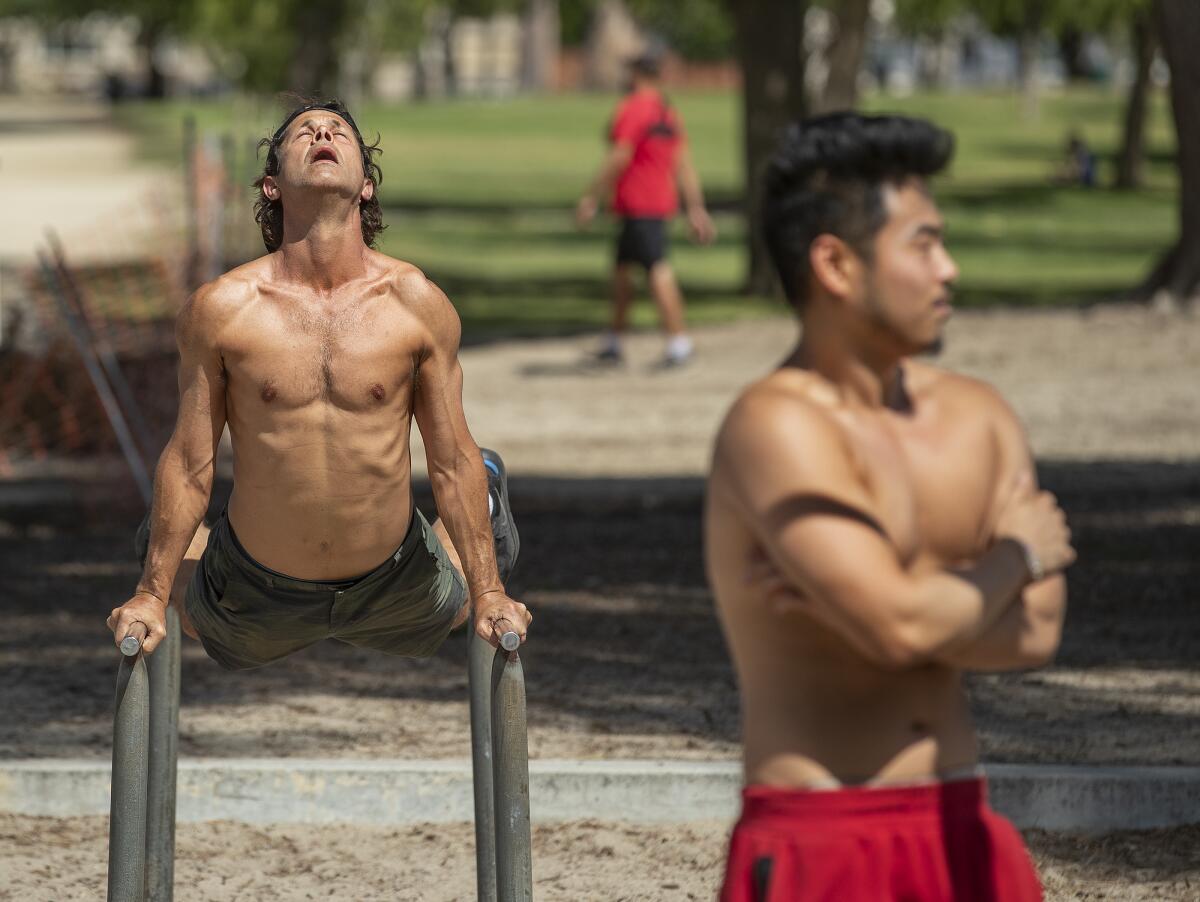
Historical political statistics bear that out. In 2002 — the year the San Fernando Valley tried [and failed] to secede from the city of Los Angeles — Democratic voters made up 51.3% of the Valley electorate. Republicans were 28.5%, and an additional 17.6% declined to state their political affiliation, according to an analysis of voter registrations compiled by a political data firm that relies on records from the county registrar.
The percentage of Valley Democrats has held steady over the last two decades, but statistics from the registrar show the percentage of Republicans has dropped every four years. In 2020, the last big election year, they accounted for only 16.9% of Valley voters, dwarfed even by the 29.8% who declined to state a political preference.
And not only has the Valley become less politically conservative, our demographics are beginning to look more like a mirror image of Los Angeles. The Valley is a bit whiter and has a smaller percentage of Black residents than Los Angeles. But recent Census figures suggest the percentages of Latinos and Asian Americans are virtually the same in the San Fernando Valley and the city of Los Angeles.
Today’s Valley is also beset by the same sorts of problems afflicting residents in the city’s urban core. Burglaries are common, violent crime is rising and homeless encampments are blocking residential sidewalks and commandeering freeway underpasses.
“It doesn’t matter what part of the city you’re living in,” Shallman said. “You want it to be safe. Now you sit outside at a restaurant, and there are homeless people walking up and down, asking you for money or for help, and you have to wonder if they’re going to be mentally ill.”
The election year response to that in my neighborhood has largely been “throw the bums out” and bring in a new passel of leaders — and hope they are equipped with magic wands to dispatch the disarray.
“Most voters don’t have a civics book next to them,” Shallman pointed out. “They don’t know who’s in charge of what.
“They just say, ‘Make my traffic go away, make my schools better and safer. We came out here to live in the suburbs because it’s away from crime, you have nice peaceful neighbors, you can walk your dog at night.’ They feel they pay taxes and they’re not getting what they pay for anymore.”
In fact, that feeling is apt to be most intense among suburban dwellers, who research shows often prioritize safety, green spaces and communal homogeneity over trendy restaurants, cultural assets or short commutes.
The “desire of property owners to enhance the value of their investment” has been a driving force behind the growth of suburbs and gated communities since the middle of the 20th century, according to “Crabgrass Frontier,” a scholarly look at “the suburbanization of the United States.”
And when that investment seems to be at risk, it’s easy to feel desperate for a leader who is tough enough to make changes and experienced enough to understand the confluence of forces that brought us here.
So what do voters do when they’re faced with two very different approaches, promoted by two dramatically different people — and both of them are competing for the San Fernando Valley’s fealty.
Caruso promises he’ll “clean up corruption in City Hall” and blames “corrupt and incompetent politicians” for the city’s rising crime and spreading homelessness. He’s spent $23 million of his own money on getting that message out.
Bass is relying on her record of community service, ability to unite disparate groups and leadership in Congress and the California statehouse. The Valley is not her natural constituency, but Bass is not expected to cede those voters to Caruso once the “real” campaign gets rolling.
It’s uncertain right now what approach will play best and in which Valley communities. But the question analysts rely on when they’re testing the waters by polling voters might provide a clue.
“You ask them, ‘Do you believe things are heading in the right direction?’” Shallman said. “You want to know is this a ‘change electorate.’ Are they looking for dramatic change? Or do they just want somebody who can steer us in the same direction?”
California’s 2022 primary election is Tuesday. Here’s how to cast a ballot.
This Los Angeles electorate is clearly looking for a course correction, Shallman said.
“And the problem, of course, is if you are in office — whether you are Karen [Bass] or Mike [Feuer] — ‘these guys’ failed, they had their chance.”
More to Read
Sign up for Essential California
The most important California stories and recommendations in your inbox every morning.
You may occasionally receive promotional content from the Los Angeles Times.
